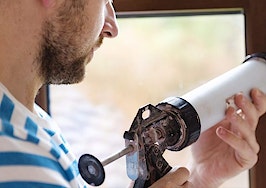- During the summer, moisture and hot air meet to make the perfect breeding ground for some insects and creatures. Find them and their nests before they find you.
- Proper guardrails should be at least 36 inches to 42 inches tall.
- Use a tool such as a screwdriver to push in and gently check wood.
Last year was the hottest year on record. Yep. Climate change means that each year might become just a small degree warmer than the last.
Now more than ever, it’s important to ensure your clients are prepared to look for possible issues that might affect their home’s sale or their purchase of a new home.
Here are some tips from Pillar To Post Home Inspectors to guide a DIY home inspection. Feel free to share with your clients as a checklist when buying or selling a home.
Air conditioner
- Inspect the unit to make sure it’s in good working condition.
- The air conditioner must be leveled and free from obstruction.
Tip: Do not fully cover your air conditioning unit during the winter — doing so will cause the fins to rust inside. Instead, consider covering it with a piece of plywood and securing it with a rock.
Deck
- Maintain your deck by ensuring it’s stained or painted on a regular basis.
- Check the overall structure every spring and fall.
- Ensure there are proper footings to prevent sinking.
Tip: Proper guardrails should be at least 36 inches to 42 inches tall.
Garage
Ensure the garage entrance has a working fire-rated door with auto closure.
- Check that safety lasers on automatic door openers are aligned and operational.
Tip: Use a wood block to test door closure for pressure.
Rodents and pest prevention
- Check for common rodent entry points, including open gaps in the exterior.
Tip: Another common entry point is where the air conditioner lines enter the house.
Gutters
- Check for clogs and clear the gutters. If you find any damage left over from the harsh months, get it fixed to eliminate the possibility of developing water damage.
Tip: Also, while you’re up by the roof, it’s worth doing a survey to see if there are any missing shingles or other types of damage.
Foundation
- Any low areas you come across should be filled with compacted soil. A big rain can lead to flooding and foundation damage.
Tip: Check to see that there are no large pools of water in the yard or in buckets or planters on the grounds. Insects will breed there.
Doors and windows
- Assess the wood around doors and windows to see if it’s soft or if there is any rot. That could lead to further problems that are best fixed early.
Tip: Use a tool such as a screwdriver to push in and gently check wood.
Chimney
- Check to see if there is any damage from the winter months to the chimney. Even if it looks good, now is the time to have the entire structure professionally inspected and cleaned. The homeowner won’t be using it during the summer.
Tip: It’s also a good time to clear away a pile of firewood outside (or inside); because there’s a chance something might be nesting under it; put on protective gloves before picking up any of the wood.
Faucets
- Check to see if there have been any leaks or damage to hoses or faucets over winter. The flow from the faucet should be good and strong, or it might indicate some pipe damage.
Big tip: If your clients are purchasing a home or condominium on a golf course — please have them watch this video and where they step.
In the end, the best solution for all homeowners is to cruise their homes both inside and out once a month and check for problems. These tiny issues are so much easier to stop before they grow into monster problems.
Dan Steward is the president and CEO of Pillar To Post Home Inspectors You can follow him on Twitter or LinkedIn.












